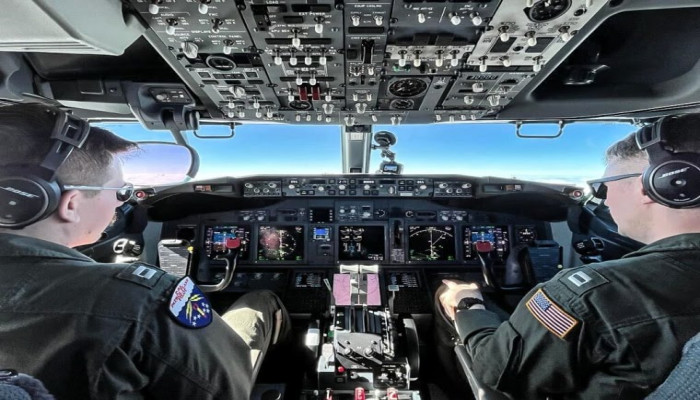Chinese fighter jet flies within 500 feet of U.S. patrol over South China Sea: Report
- In Reports
- 08:05 PM, Feb 25, 2023
- Myind Staff
The U.S. Navy plane had been in the air over the South China Sea for a few hours when a warning came crackling over the radio.
“No approaching any more or you will pay full responsibility,” said a voice from a ground station belonging to China’s air force.
Soon after, a Chinese J-11 fighter jet appeared about 500 feet off the left wing, flying beside the American P-8 Poseidon maritime patrol aircraft for well over an hour as it passed over mostly uninhabited islands that are claimed by both China and its neighbors.
U.S. officials said encounters like the one witnessed by NBC News on Friday, though professional, are becoming more frequent as Beijing and Washington step up their campaigns for influence in the Pacific. The strategically important South China Sea is an increasingly prominent stage for the spiraling tensions between the world’s two largest economies, which have clashed over everything from Taiwan to the war in Ukraine.
Inside the plane, U.S. Navy officers sat at about half-dozen computer stations, analyzing radar images from powerful specialized cameras affixed to the outside of the aircraft as it made way around the Paracel Islands across the South China Sea, before returning to Kadena Air Base in Okinawa, Japan.
Once a Chinese plane comes within 1,000 feet “we’ll communicate with them,” Capt. Will Toraason, the commander of U.S. Navy surveillance aircraft, told NBC News early Friday.
“Typically we don’t get a response, sometimes we’ll get nonverbal responses. But overall we’re trying to encourage a safe and professional encounter while we’re both operating in international airspace,” he said.
China, which has the world’s largest navy, claims sovereignty over most of the South China Sea despite a landmark 2016 ruling by an international tribunal that its claims have no legal basis. Its stance has antagonized a number of countries in the region with which it has territorial disputes.
The U.S. and many of China’s neighbors accuse Beijing of using “gray zone” tactics that are not legally acts of war to intimidate other countries and assert greater control over the area. In response, the U.S. regularly conducts “freedom of navigation” and other operations in international waters and airspace.
China says it is protecting its sovereignty and maritime interests and that “close-in reconnaissance” by American planes and warships threatens its national security and undermines regional peace and stability.
Artificial islands that China has built in the last decade have made it easier for its coast guard and maritime militia to carry out near-daily patrols. “You now see regularly a constant presence in the most contested areas,” said Raymond Powell of the Gordian Knot Center for National Security Innovation at Stanford.
On other islands that were once tiny, rocky outcrops, China has quietly installed runways, radar sites and missile systems.
“Since I’ve been in the Navy, going on 18, 19 years now, I can tell you there is a dramatic change over that span, specifically the South China Sea,” said Cmdr. Marc Hines on board the U.S. aircraft. He added that the buildup of runways and hangars is “typical now but it wasn’t necessarily the case” when he joined the Navy.
Image courtesy: Janis Mackey Frayer/NBC News







Comments